Last Updated on December 18, 2024 by Michelle
Pork lard is an amazing thing. I use it in my kitchen daily, in one of many ways.
The first year we brought pigs home to our little New England farm, I had no idea of the joy their amazing variety of fat would bring me. I was, afterall, just in in for the bacon. But trust me, I’ve come to learn that one of my favorite parts of being a pig farmer is the fat, y’all.
If you think I’m crazy, read on. This article breaks down the many versatile uses of the three types of pork lard, and it might just make you a believer in good, amazing, glorious pig fat.
If you still need even more reasons, see 11 Reasons to Use Lard in Cooking & Baking.
If you want to know why I insist on using this amazingly good-for-you fat, and exactly how I use each kind, read “How to Bake with Lard (& why you should).”
Listen in or join us (on youtube) as RuthAnn Zimmerman and I talk about the amazingness of good fat in this podcast episode: Good Fats, with Ruthann Zimmerman
A Complete Guide to Pork Lard
There are 3 varieties of lard sourced from a pig. They’re all wonderful and I tend to use them each in different ways. Two of them are rendered exactly the same way, which we’ll dive deep into in our next article (click here for the Complete Guide to Rendering Lard). The other one doesn’t need any rendering at all, just a little rinsing and proper storage, read on for more about that.
The 3 Types of Pork Lard
- Back fat (this is the most common and there is the most of this fat on any one pig)
- Leaf fat (this is the pure white, coveted fat, once it is rendered)
- Caul fat (also known as the lace fat, this is the one that simply needs to be rinsed, dried, and properly stored)
Back Fat
This is the think strip of fat that lies just under the skin and covers a pig’s back. The thickest, best portion of this lies above the pork loin, but it extends to over the shoulder (or Boston Butt) area of the pig as well. Often a butcher will provide this fat as a large slab, with the skin still attached.
If you have a helpful butcher, ask if he’d be willing to remove the skin and chop (or even grind) the fat up before giving it to you. If shouldn’t take him long but this will save you quite a lot of effort.
If you do need to remove the skin and/or cut it up yourself, I recommend doing this when it is partially frozen. I’ve never attempted it with warm, room temperature fat, but I can’t imagine it would be much fun.
HOW I USE IT: This fat, when rendered properly (click here for the Complete Guide to Rendering Lard) will have almost zero pork taste, but it will never be as pure (or as gloriously–almost blinding–white) as leaf fat. So if I have plenty of leaf fat, I seldom use the back fat for baking. But I definitely do, and it’s definitely wonderful.
Instead, this is the fat I often cook with. I keep a jar of it by the stove and use it to cook in my cast iron daily. It’s also the lard I go for when I want to deep fry some fries or some yeast donuts.
SIDE NOTE: Most of the summer I find it’s fine to leave my lard where it sits the other 3 season of the year. But occationally, during a heat wave, I will have to move my lard jar to the fridge or it liquifies. If you live in a warmer climate than New England, you may have to store your lard in the fridge during the warmer times of the year.
RENDERING IT: See the Complete Guide to Rendering Lard here. Both back fat and leaf fat are rendered exactly the same way, but I do store each differently. (I cover that in the rendering article.)
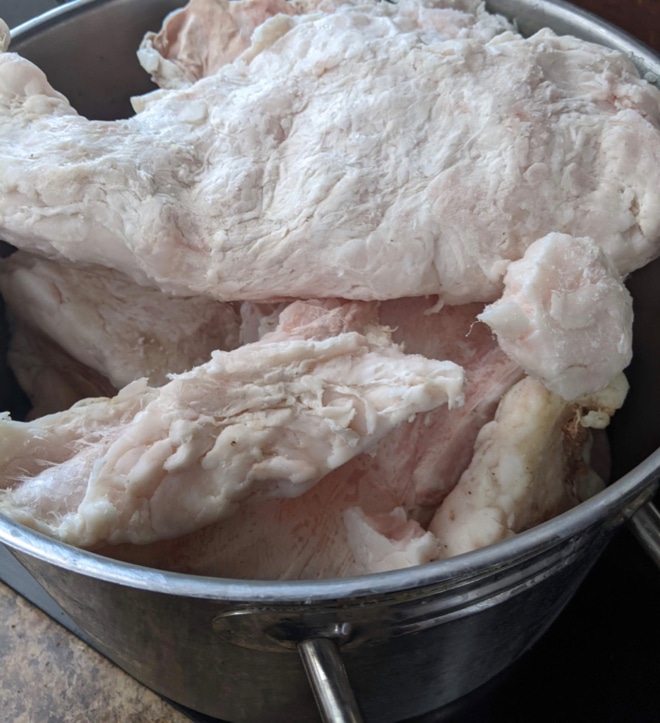
Leaf Fat
The leaf fat is the portion of fat that lies primarily around the pig’s kidneys, but some is sourced from around the pork belly as well (aka the bacon). This looks more lumpy, not a single long thick strip, like the back fat.
It will often still have a thin layer of membrane on one side. This is the membrane that separated the layer of fat from the organs in the pig. It’s often quite easy to pull off before rendering, but if you miss some, no biggie, it will just wind up floating with your cracklins and can be removed later. (More about cracklins in a bit.)
HOW I USE IT: The leaf fat is purer, cleaner, whiter than even the best rendered back fat. Even if the back fat has zero pig flavor (because it was rendered carefully), it will always be slightly brown tinted in color, more like the color of bacon fat (which I also collect in a jar in my fridge to use for deep frying and skillet cooking as well, for those times when I WANT the bacon flavor in my foods). So the leaf fat is the fat I reserve for baking, in place of butter in any recipe at a 1:1 ratio.
RENDERING IT: See the Complete Guide to Rendering Lard. Both back fat and leaf fat are rendered exactly the same way, but I do store each differently. I cover all the details in that article on rendering.
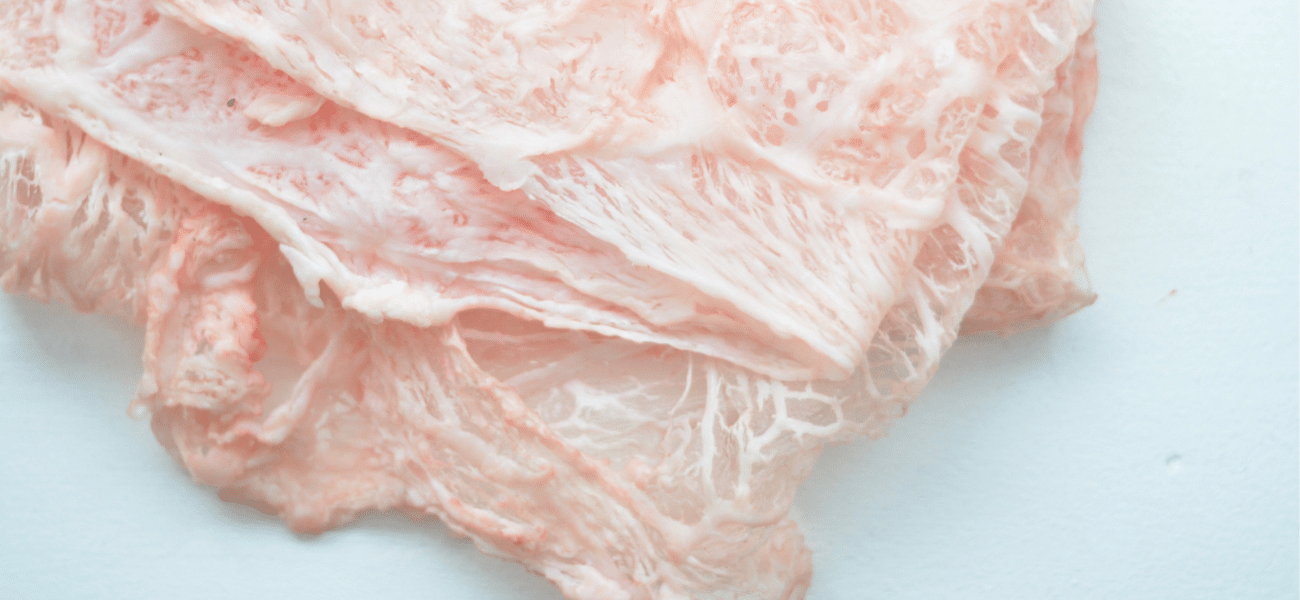
Caul Fat
The caul fat is my priced, treasured fat that gets stored carefully and used lovingly. If I sound a little fat-crazy to you, well, I’d venture you’ve never cooked with caul fat. It’s thin, bacon-flavored, fat lace that serves as a thin membrane surrounding the stomach in a pig. This lacy strip of fat is fabulous for searing around a pork loin roast as it cooks (watch the video about using caul fat there) or wrapping around maple sausage as a super easy casing. And it’s magical to watch it tighten around the meat as it fries and turns a beautiful golden brown while it sizzles.
HOW I USE IT: I use caul fat to wrap any meat I want to add special bacon-like flavor and added moisture to, or in place of casing for sausage. I source this right from the pig, immediately after it is butchered here on our farm, do my best to keep it out of dirt or mud, and carry it immediately through the fields and to the kitchen to rinse it. I then lay it out on old, clean sheets to dry before folding it and storing it in freezer bags in the deep freezer.
RENDERING IT: Since lace fat is just a thin membrane, there is no need to render it at all. All you need to do is clean it and store in as I describe above.
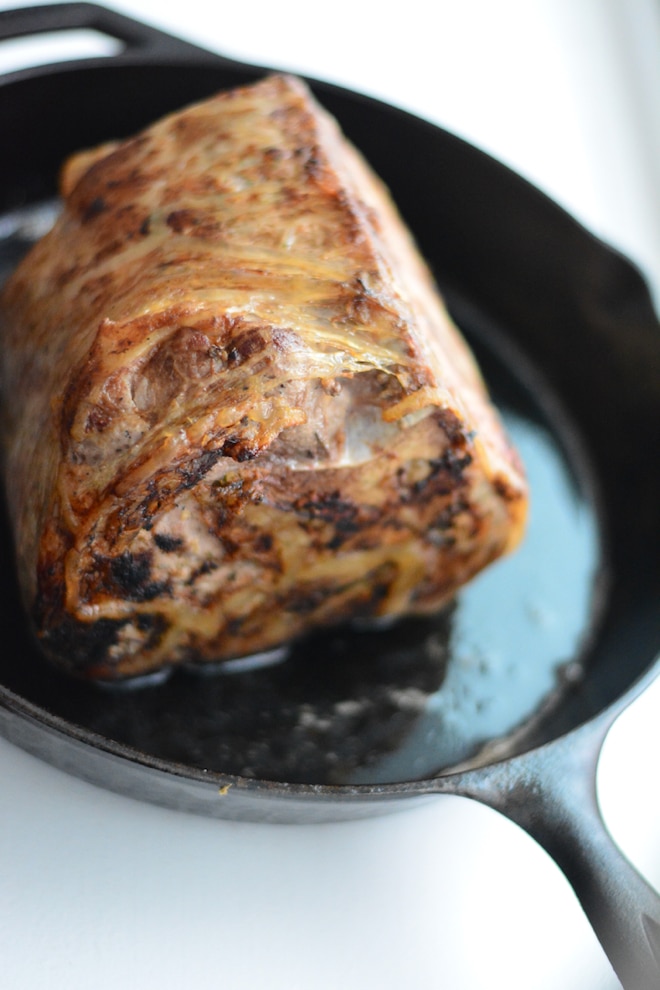
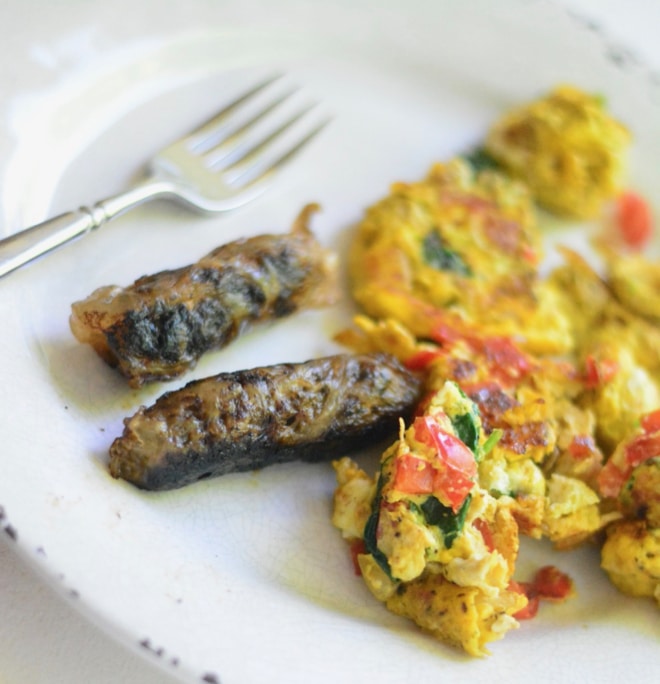
Is Pork Lard Solid at Room Temperature?
With the exception of what I explained above, and how lard will liquify during hot, humid temperatures if your kitchen isn’t air-conditioned, all 3 types of pork lard are solid at room temperature. But both back fat and leaf fat are spreadable at room temperature. In fact, lard is a great butter substitute, even when it comes to making a grilled cheese. Just cover the outer side of your two pieces of bread and go ahead and grill up a great cheesy lunch.
Hop over here to read more about How to Bake with Lard (and my favorite way to measure and store it for baking).
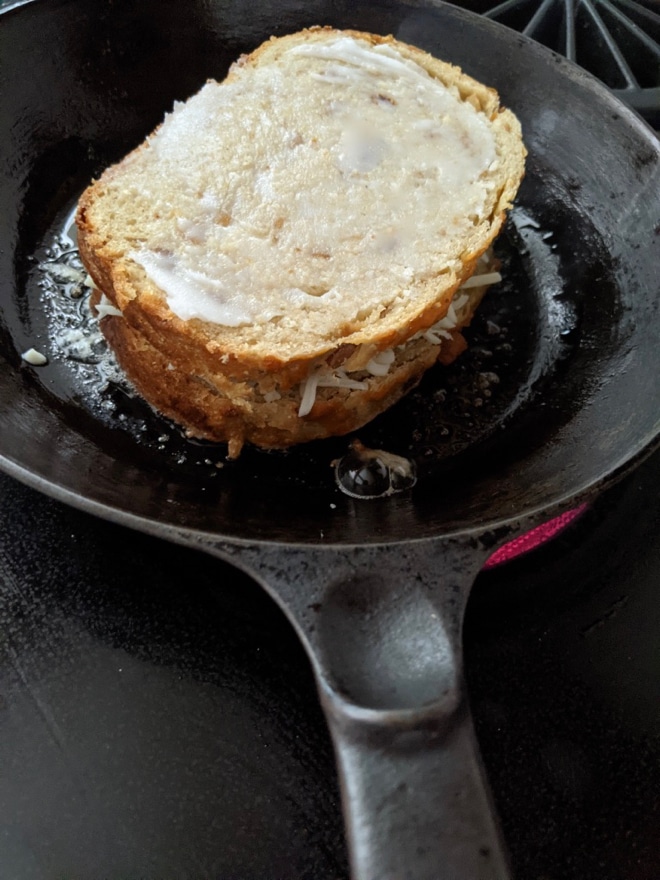
How do you render pork lard?
Hop over to this article for all the details on how to render pork lard.
Can I bake with lard?
One thousand times YES… you can bake with lard. I love baking with lard. Go here to find out How to Bake with Lard & why you should!
So is all lard the good stuff?
There are many options for sourcing fantastic real pork lard. But first let me tell you what NOT to do…
Don’t buy “hydrogenated lard” that you might see at your regular grocery store. Hydrogenated lard has been altered in a lab. It makes fat have a longer shelf life, which is good for the manufacturer, but it has also undergone a chemical change that makes it no longer good for you to eat. Read more about that here.
Where can you buy good lard?
- If you live in New England and would like to purchase a whole or half a pig, I would love to chat about how our family farm can help you load your freezer next fall (with amazing pig fat as well as delicious pasture-raised meat). We keep a waiting list, and I am always happy to meet new customers and expand our plans for next year, to make sure your family enjoys high-quality meat. To message me, hop over to instagram or send an email to michelle(dot)visser(at)outlook(dot)com.
- Find local pig farmers and ask around until you can hopefully find one who either sells lard they have rendered or maybe the raw fat, which you can then render yourself. See my Complete Guide to Rendering Lard. (Or just store away until you use it, in the case of caul fat.)
- Go to eatwild.com and search for a pig farm near you.
- Order online. Seriously. You can purchase this amazing fat, ready to use, and skipped to your door:
Lard made from the inner, leaf fat
More Information on This Topic:
How I Use Caul Fat (video)
5 Reasons I Don’t Buy Meat at the Grocery Store
Cooking a Pork Loin Roast (with good fats)
Tools I Wouldn’t Want to be Without in my Farmhouse Kitchen
“He satisfies the thirsty and fills the hungry with good things.” Psalm 107:9
Pin this for later!
Click on the image below to pin this post.
Find out why SoulyRested was considered to be one of the Top 20 Must-Read Homesteading Blogs of 2018 and then one of the Top Homesteading Blogs of 2021 as well.
Glance at my Resource Page if you’d like to get a glimpse of all the supplies I use and recommend for everything from gardening, to homeschooling, to chicken care, to nature journaling, to maple syrup making.
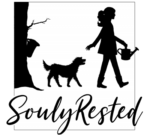
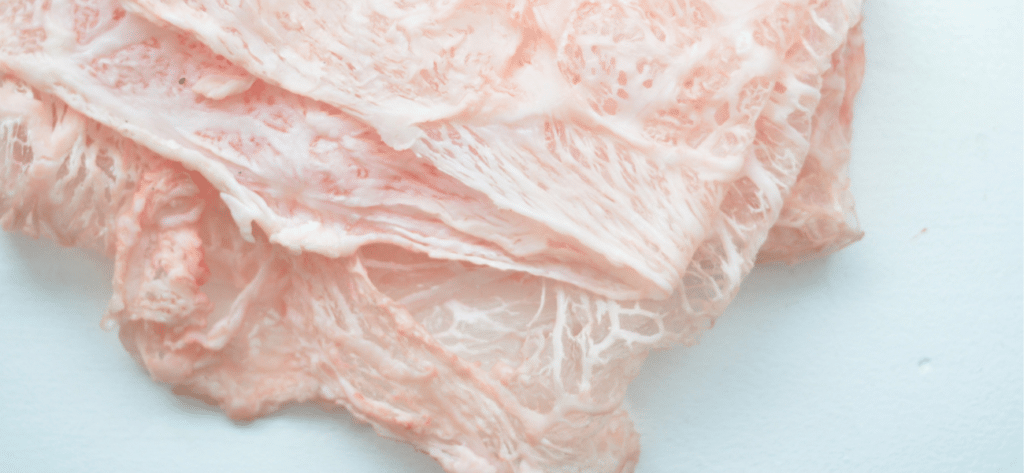
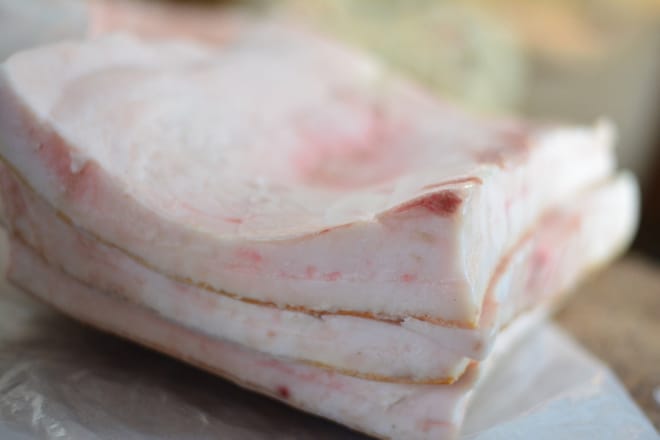
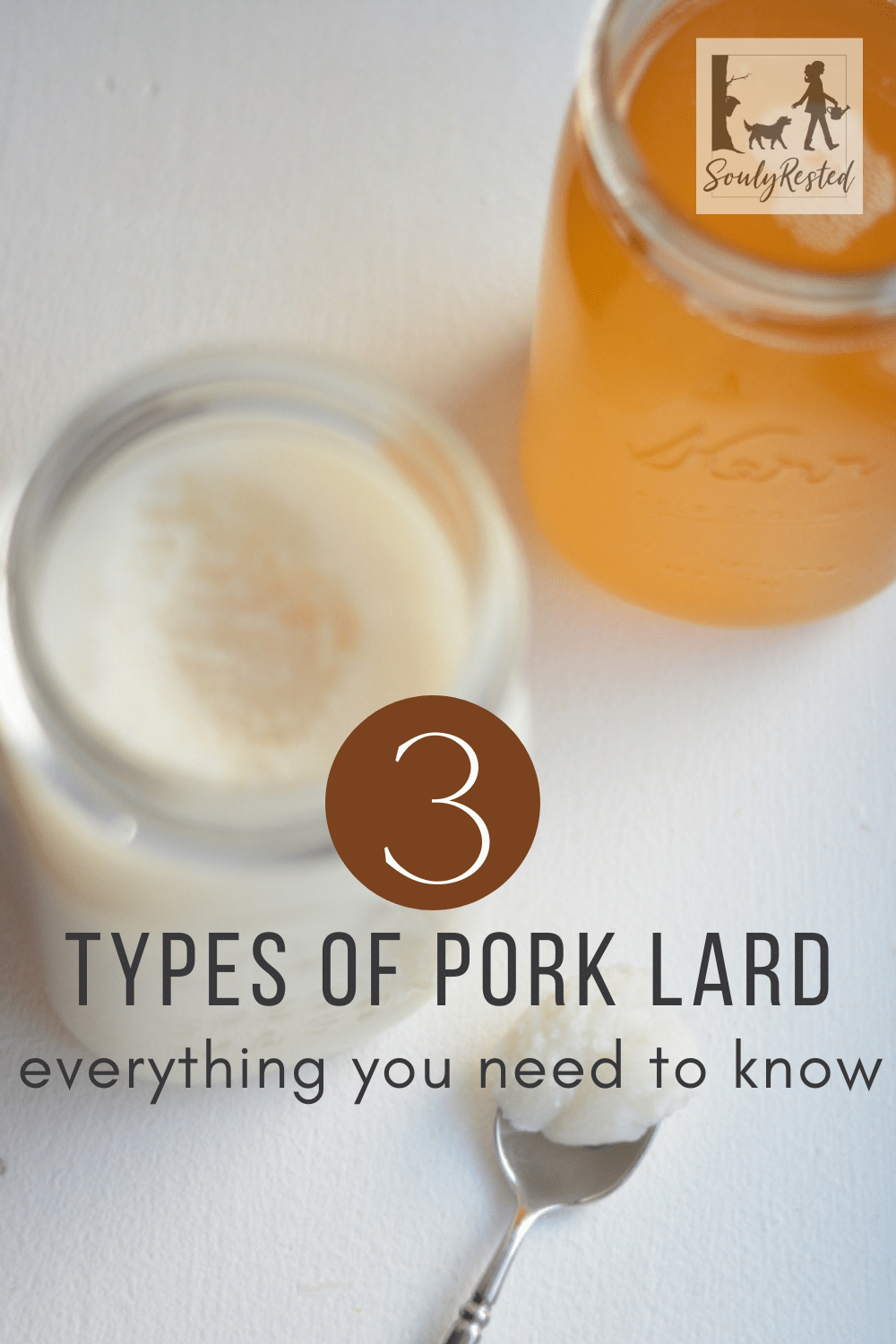
I am making guanciale, made from pig cheek.
This fat is supposed to be different from back fat.
Have you noticed the difference and what are the underlying anatomical differences?
I have not experimented with the jowls yet, but I’m told it’s very much like bacon.
Michelle can you recommend a cookbook for lard?
honestly no, I don’t know of one… maybe I need to convince my agent that I should write one! 🙂
I absolutely loved reading this post! It’s so informative and brings back memories of how my family used to utilize every part of the pig on our farm. The breakdown of the different types of pork lard and how to use each one is incredibly helpful, especially for someone like me who’s always looking for ways to make traditional cooking methods healthier and more sustainable. I can’t wait to try out some of these tips in my kitchen, especially with caul fat! Thanks for sharing such valuable knowledge and making it so easy to follow.
so glad it was helpful!
I made a big batch of lard from back fat of two heritage Pigs, in my oven in my water bath canner. I used 1/3 cup of water then added the ground fat.
I stirred & checked in a 200° oven for about 8 -10 hrs. There were brown bits on the bottom.
I put thru a strainer then they cheesecloth & into pint jars.
The bits are soft & jelly. None of the ǰars are solid, all are runny. Runny like dinner gravy.
What did I do wrong? Do I need toʻ cook it more? Can you pour out the jars & render the same lard more?
hmmmm i’ve never used this method for rendering and i don’t add any water when i render, so i don’t know. I can tell you the only time mine didn’t solidify I was able to determine that one of my pans had not been cleaned well before my daughter started so for me my problem was that things weren’t sterile/throughly clean. While you can re-render the fat, I’m sorry I have a hunch it isn’t going to solidify for you the second time if it didn’t the first 🙁 Sorry that I don’t know a solution.
I order my pork from a family friend who does his own butchering – he even had to
take a test. I know he uses some of the fat for sausage. I am going to ask for the extra fat from my pig – didn’t even know it was a thing. Great article ❤️